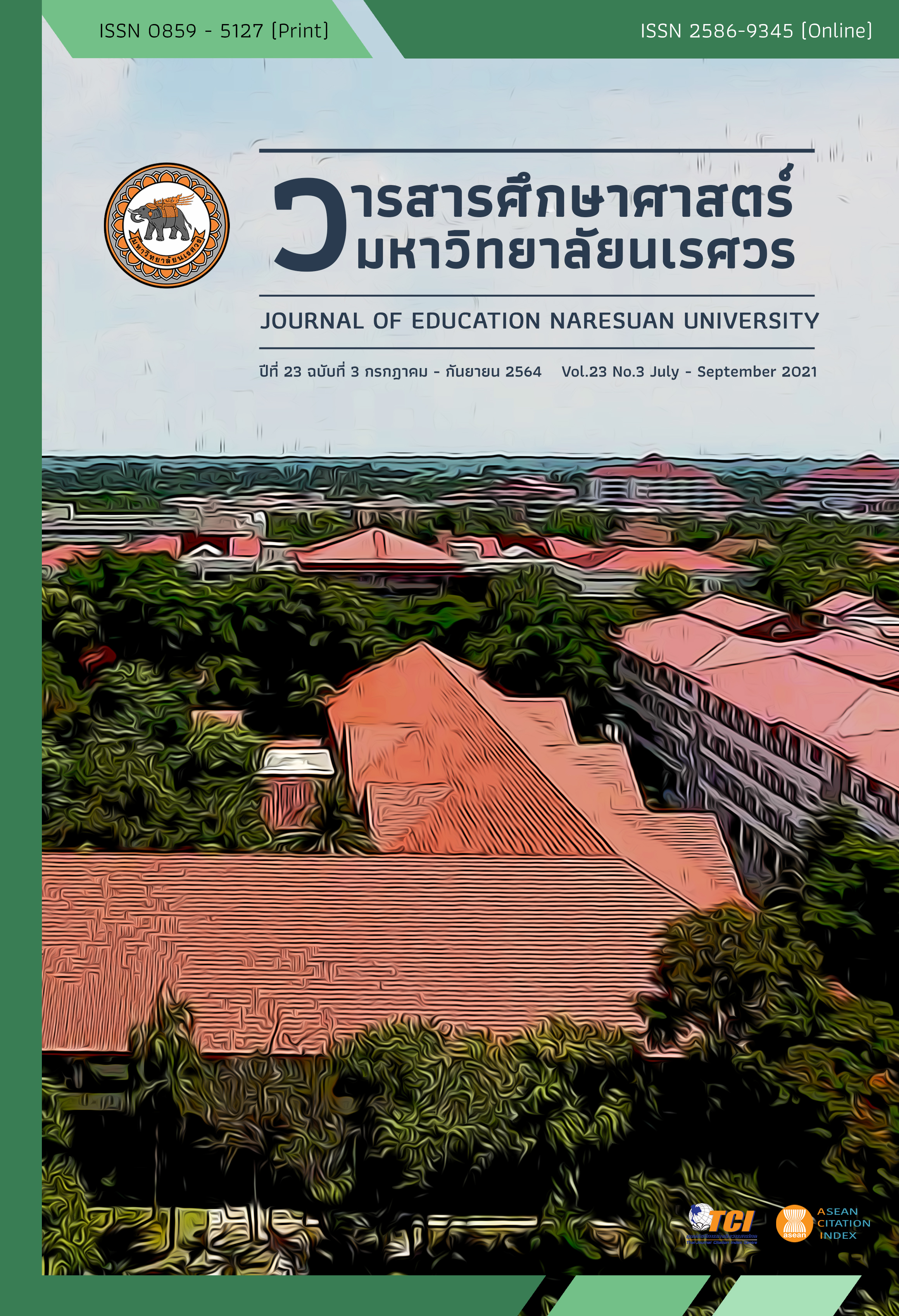A DEVELOPMENT OF LEARNING ACTIVITY USING FISHBONE DIAGRAM VIA FACEBOOK TO ENHANCE PROJECT PROBLEM ANALYTICAL ABILITY OF STUDENTS การพัฒนากิจกรรมการเรียนรู้โดยใช้ผังก้างปลาร่วมกับเฟซบุ๊กเพื่อพัฒนาความสามารถในการคิดวิเคราะห์ปัญหาโครงงานของนิสิต
Main Article Content
Abstract
The objective of this research were to 1) develop learning activities by using fishbone diagrams and Facebook to project problem analytical ability of students, 2) compare the thinking ability of project related problems of undergraduate students between normal learning groups and groups learned by learning activities using fishbone diagrams with Facebook, and 3) study the opinions of students towards learning activities using fishbone diagrams with Facebook. The sample group were undergraduate students, Naresuan University enrolled in the course “001226 Way of Living in the Digital Age” 60 persons. The research tools were the learning activities plan, assessment form for thinking ability analyzing project problems and a questionnaire of students' opinions towards learning activities using fishbone diagrams and Facebook to project problem analytical ability of students. The finding of this research showed that: 1) the results of the development of learning activities by using fishbone diagrams with Facebook on the ability to think and analyze the project problems of students. A students get learning activities that focus on analyzing project problems by using fishbone plan as a tool to analyze project problems which is described as a diagrams. Fishbone diagrams describe problems and cause by thinking, analyzing, classifying and finding relationships and sub-causes. It also encourages students to use Facebook as a tool to exchange ideas among instructors and students, in various groups, 2) the comparison of the thinking of undergraduate students between the normal learning group and the group learning by using the fishbone diagrams together with Facebook shows the thinking ability analyzed the project problems of students who learned with learning activities by using fishbone diagrams together with Facebook and students who learned with normal teaching are different significantly at the level of .05, and 3) the results of the analysis of students' opinions on learning activities using fishbone diagram together with Facebook show that in the overall picture, students had opinions on learning activities using the fishbone plan in conjunction with Facebook at a high level ( = 4.00, S.D. = 0.47).
Article Details
The owner of the article does not copy or violate any of its copyright. If any copyright infringement occurs or prosecution, in any case, the Editorial Board is not involved in all the rights to the owner of the article to be performed.
References
Chareonwongsak, K. (2003). Integrative thinking. Bangkok: Success Media. [in Thai]
Imjumlong, A, & Ongwilaikasaem, W. (2013). The use of Facebook as a media channel for studying the communication arts. Dhurakij Pundit Communication Arts Journal, 7(1), 75-93. [in Thai]
Kaewurai, R., & Muendej, S. (2014). The 8 steps of a project-based learning with social media to enhance 21st century skills. Retrieved from https://hooahz.wordpress.com/2013/11/10/8stepspbl/ [in Thai]
Noinakorn, S., Kaewurai, R., & Rodniam, N. (2019). Promoting creative problem solving by project-based learning integrated with Facebook. Journal of Education Naresuan University, 21(1), 360-376. [in Thai]
Phatthanasilp, P. (2015). The use of graphic organizers to enhance the critical reading ability and the critical thinking ability of students from gifted program (Master thesis). Songkhla: Prince of Songkla University. [in Thai]
Pongsuparp, R. (2008). Public relations message sought and communication satisfaction through online social network of university students (Master thesis). Bangkok: Chulalongkorn University. [in Thai]
Praphin, C., Kongmanus, K., Chiranuparp, C., & Kaewurai, W. (2017). The study of components of computer subject instructional model based on project based learning with social media to enhance information communication and technology literacy for upper primary students. Veridian E-Journal, Silpakorn University, 10(2), 299-317. [in Thai]
Sintapanon, S. (2007). The development of thinking skills-- conquer teaching (2nd ed.). Bangkok: Liangchiang Printing. [in Thai]
Sungkawadee, R., & Keawurai, R. (2017). The development of e–learning courseware integrated with activities on Facebook in the ways of living in the digital age course: The ethics of living in the digital era of living for bachelor degree students, Naresuan university. Journal of Education Naresuan University, 19(3), 133-146. [in Thai]
Thatthong, K. (2011). Teaching thinking: Learning management for thinking development (2nd ed.). Nakhon Pathom: Phetkasem Printing. [in Thai]
Thienthai, C. (2005). Executive view management. Bangkok: McRough Hill. [in Thai]
Thongpiw, W. (2013). The development analytical thinking skills by using the graphic organizer instructional model for mathayomsuksa 3 students. Journal of Technical Education Rajamangala Thanyaburi, 4(2), 107 – 115. [in Thai]


